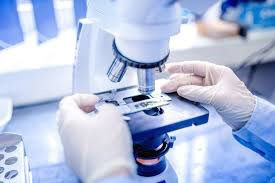Increasing Opportunities in Cell & Gene Therapy
Gene Therapy
For years we have known that many diseases have their origin at a cellular or genetic level, arising through single or multiple genetic errors. The advent of cell and gene therapy is giving us the potential to repair and replace cells and genes to cure rather than just control diseases. So, how are these therapies currently being applied in the 21st century?
Gene therapy involves the introduction of a small amount of new genetic material into cells using a disarmed viral vector carrier. This genetic material can either be integrated into the chromosome of the cell or expressed within the cell depending upon the therapeutic approach. The use of this approach for disease treatment was first tried over 20 years ago and Cobra’s founding company Therexys was one of the first companies to be set up within the UK to assess this approach. However, it is only in recent years that researchers and clinicians have been able to achieve the clinical successes they first hoped for. These approaches have brought about significant advances in treatments for diseases caused by single genetic errors, such as blindness, haemophilia and spinal muscular atrophy, resulting in the licencing of new therapies such as Luxturna by Spark Therapeutics.

Cell therapy refers to the injection of cellular material (usually live cells) into the patient. The origin of the cells can be from the same individual (autologous) or from another patient (allogeneic). Typically, cell therapy strategies include isolating and transferring ‘a repair crew’ that replaces a defective cell population. Blood transfusions were historically the first kind of cell therapy and are now routine now. Also bone marrow transplantation which dates back to the 1950s to treat cancer, immunodeficiency diseases, spinal cord injuries, etc. is ever growing with time. The 1980s also saw the development of tissue regeneration including skin cell generation and the development of stem cells therapies and, more recently, the ability to re-programme stem cells. Therefore, the range of cells now being used for this therapy, particularly stem cells, is expanding. Although there is a lot of excitement in the potential of stem cells for regenerative medicine many technical and clinical challenges still exist with regards developing these approaches as routine therapies
The meeting on 6th December at Keele University will showcase a real-life case study using bone-derived cells to treat arthritis, pioneered by Professor James Richardson.
The ability to manipulate and expand human cells outside of the body has been combined with gene therapy where cells taken from the body can be genetically modified outside of the body to repair genetic faults as shown in the product Strimvalis by the UK’s GSK for the treatment of patients with severe combined immunodeficiency disease (SCID) where children are born with no immune system (“bubble babies”). More recently, we have seen trials of a product to treat junctional epidermolysis bullosa a life-threatening skin condition which leaves skin as fragile as a butterfly’s wings (“butterfly babies”).
Taking this approach, a stage further we are also seeing the use of gene therapy to enhance cell capabilities, specifically giving a sub group of white blood cells (T Cells) the ability to recognise and destroy cancer cells, otherwise known as CAR-T therapy. This approach has had spectacular outputs in the treatment of untreatable forms of leukaemia and has resulted in two licenced products, Kymriah and Yescarta. Another development in this field is the ability to edit genes using a technology called CRISPR (Clustered Regularly Interspaced Short Palindromic Repeats) which allows for precision editing of genes, creating potential treatments or cures for diseases.
Whilst cell and gene therapy are far from new concepts, the clinical potential is far from realised and it is apparent that we are only just beginning to see the enormous impact it can have on improving patient lives.
Cell Therapy, Gene Therapy, Stem Cell, Stem Cell Therapy, Genomics, Epigenetics, Tissue Engineering, Tissue Science, Bioengineering.
To know more about Gene Therapy Go through the link: https://goo.gl/aqfEXj
Comments
Post a Comment